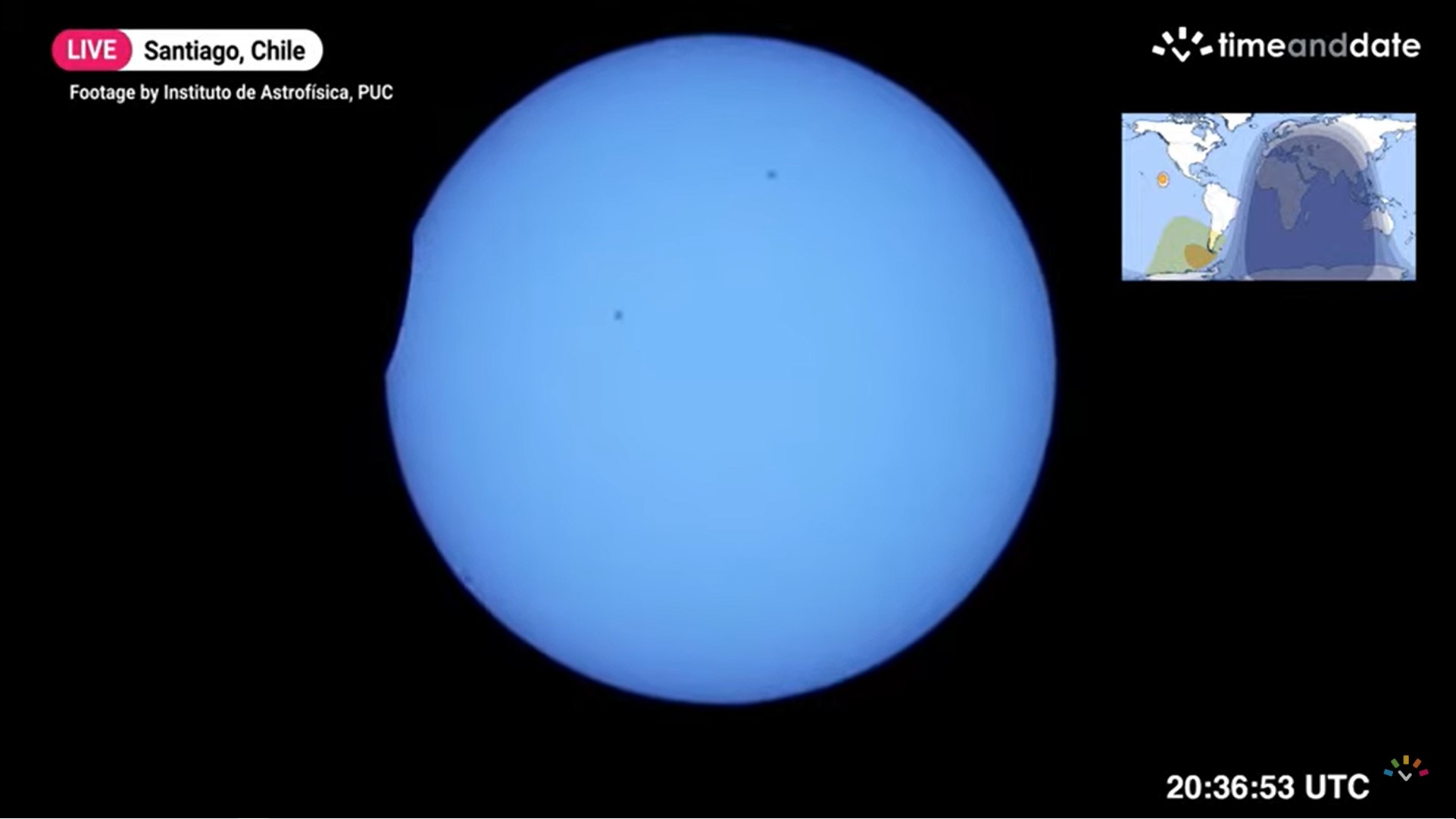The first solar eclipse of 2022 has begun and here's the first views!
Update for 6:14 pm ET: TimeandDate.com's webcast for the partial solar eclipse of April 30, 2022 from Chile and Argentina has ended as the sun has set during mid-eclipse. Check out the amazing views from the video above. Read our full wrap story on the solar eclipse.
It's the moment skywatchers have been waiting for: The year's first solar eclipse has begun.
The partial solar eclipse of April 30 began at about 2:45 p.m. EDT (1845 GMT), according to Timeanddate.com, which is livestreaming views from Argentina and Chile. However, the eclipse was first visible over the Southern Ocean off the coast of Antarctica, where few skywatchers could enjoy the solar eclipse.
The moon's shadow took about an hour to reach the southern tip of South America and become more accessible to skywatchers. Timeanddate.com's broadcast from El Colorado, Chile, about 30 miles (50 kilometers) away from Santiago, showed the first views of the sun with the characteristic missing "bite" clearly visible a little after 4:30 p.m. EDT (2030 GMT). You can watch the eclipse live on Space.com, courtesy of Timeanddate.com.
Related: How to watch the April 2022 solar eclipse online
The moon's shadow, and in turn the partial eclipse, will continue traveling on a northeasterly path until fading into the sunset over South America, ending at 6:37 p.m. EDT (2237 GMT).
Before that moment comes, however, the eclipse has some more beautiful views to offer. The moment of greatest eclipse will occur at 4:41 p.m. EDT (2041 GMT) over the Southern Ocean. In addition to the feed from El Colorado, Timeanddate.com is also offering views from Santa Eufemia, Argentina, during the ongoing broadcast.
Breaking space news, the latest updates on rocket launches, skywatching events and more!
If you miss today's eclipse or just want more skywatching in your life, the next eclipse will be a total lunar eclipse that begins on May 15; the next solar eclipse will occur on Oct. 25.
You can prepare for the next solar eclipse with our guide on how to photograph a solar eclipse safely. Our guides on the best cameras for astrophotography and the best lenses for astrophotography can help you find the camera gear you need to capture your own snapshots.
Email Meghan Bartels at mbartels@space.com or follow her on Twitter @meghanbartels. Follow us on Twitter @Spacedotcom and on Facebook.

Meghan is a senior writer at Space.com and has more than five years' experience as a science journalist based in New York City. She joined Space.com in July 2018, with previous writing published in outlets including Newsweek and Audubon. Meghan earned an MA in science journalism from New York University and a BA in classics from Georgetown University, and in her free time she enjoys reading and visiting museums. Follow her on Twitter at @meghanbartels.


